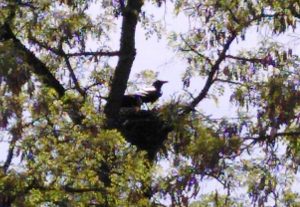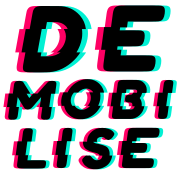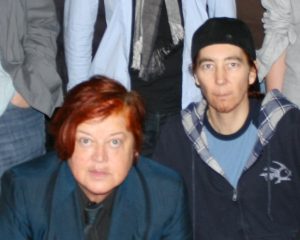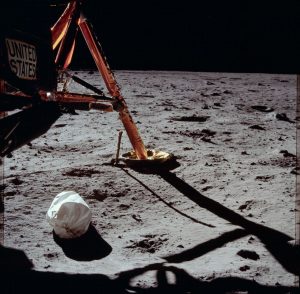 As spring turns into summer, I am watching a crows’ nest from my window, where two babies have just hatched and the parents are busy feeding and protecting them. Crows are hardly a threatened species here – there are hordes of them around the neighbourhood, and they can be quite nasty to smaller birds. However a few years ago in the same tree but a bit lower down, a crow couple hatched two babies that were within a few days devoured by some other predator, most probably a marder (like a ferret), and I have never seen such profound sadness in birds as those parents expressed. This year the nest is much higher in the tree and in the more secure position of an upright fork, unlike the previous location where a branch provided a convenient horizontal path directly to the nest, so we’re hopeful that these ones will survive. (To be honest, I’m not 100% sure if these birds are crows or ravens; I’m calling them crows as apparently ravens tend to be solitary creatures, with bigger heads and a wedge-shaped tail. These birds are definitely a couple, and often fly about in larger groups).
As spring turns into summer, I am watching a crows’ nest from my window, where two babies have just hatched and the parents are busy feeding and protecting them. Crows are hardly a threatened species here – there are hordes of them around the neighbourhood, and they can be quite nasty to smaller birds. However a few years ago in the same tree but a bit lower down, a crow couple hatched two babies that were within a few days devoured by some other predator, most probably a marder (like a ferret), and I have never seen such profound sadness in birds as those parents expressed. This year the nest is much higher in the tree and in the more secure position of an upright fork, unlike the previous location where a branch provided a convenient horizontal path directly to the nest, so we’re hopeful that these ones will survive. (To be honest, I’m not 100% sure if these birds are crows or ravens; I’m calling them crows as apparently ravens tend to be solitary creatures, with bigger heads and a wedge-shaped tail. These birds are definitely a couple, and often fly about in larger groups).
 But I’m not just sitting on the balcony watching the birds; as usual there are a number of things going on in my work life. The big project Mobilise/Demobilise is now in its last few months, with the focus on documentation, reporting and tying up loose ends. We’re working on a booklet which will be a beautiful comprehensive record of the whole project. And in a couple of weeks I’m teaching a cyberformance seminar at the Akademie der Bildene Künste, covering some of the history of networked performance as well as hopefully creating a short performance in UpStage with the participants.
But I’m not just sitting on the balcony watching the birds; as usual there are a number of things going on in my work life. The big project Mobilise/Demobilise is now in its last few months, with the focus on documentation, reporting and tying up loose ends. We’re working on a booklet which will be a beautiful comprehensive record of the whole project. And in a couple of weeks I’m teaching a cyberformance seminar at the Akademie der Bildene Künste, covering some of the history of networked performance as well as hopefully creating a short performance in UpStage with the participants.
Even as Mobilise/Demobilise comes to an end, I’m still busy with UpStage. Our fabulous developers seem to never sleep, there’s always something for me to respond to on Github, and performances and projects to support. The Backyard of Weird Creatures, a cyberformance from a Portuguese artist made using AI, will have its third performance at the ADA Symposium at the end of May, and in June the feminist media art network Faces will use UpStage for an online gathering as part of ISEA 2024. Also in June I’m going to the Eclectic Tech Carnival in Berlin, where I’ll give an UpStage workshop or presentation.
 But before all of that, this coming Sunday I’m moderating a panel discussion at the go drag! festival, on “drag and politics.” This should be interesting, as my own journey with drag had its earliest beginnings with the Topp Twins in the 1980s, then Wellington’s queer scene of the mid-90s and the eponymous Drag Kings troupe that grew out of that scene, and meeting Diane Torr in 2001 (seen at left with “Steve” after we hosted her Man for a Day workshop in Munich in 2012). The political climate of the 1980s and 90s was very different to today’s world of social media and identity politics and I’m curious as to where the discussion will take us. Also in the offline world, Playmarket just let me know that Te Awamutu Little Theatre has applied for a license to stage my play Between in July.
But before all of that, this coming Sunday I’m moderating a panel discussion at the go drag! festival, on “drag and politics.” This should be interesting, as my own journey with drag had its earliest beginnings with the Topp Twins in the 1980s, then Wellington’s queer scene of the mid-90s and the eponymous Drag Kings troupe that grew out of that scene, and meeting Diane Torr in 2001 (seen at left with “Steve” after we hosted her Man for a Day workshop in Munich in 2012). The political climate of the 1980s and 90s was very different to today’s world of social media and identity politics and I’m curious as to where the discussion will take us. Also in the offline world, Playmarket just let me know that Te Awamutu Little Theatre has applied for a license to stage my play Between in July.
And for my own work, I’m researching the moon: the current resurgence of interest in getting to the moon and exploiting its resources raises huge concerns around the political and environmental implications of commercial space travel, mining operations and so on. I’ve just read Who Owns The Moon? by A.C. Grayling, which looks at the 1967 Outer Space Treaty and how it compares with other treaties (the 1961 Antarctic Treaty and the 2023 UN Convention on the Law of the Sea). Grayling sounds a clear note of warning – such treaties only function as long as all parties respect them, and many things could trigger their collapse. Th e consequences of the failure of the Outer Space Treaty could easily include violent conflict on Earth as well as in space, and who knows what environmental catastrophes. As commercial companies race to take humans to the moon and beyond and NASA celebrates the first flower grown in space, not enough attention is being paid to possible negative consequences of all this activity. We’re already leaving our rubbish there, and filling the atmosphere with space junk …
e consequences of the failure of the Outer Space Treaty could easily include violent conflict on Earth as well as in space, and who knows what environmental catastrophes. As commercial companies race to take humans to the moon and beyond and NASA celebrates the first flower grown in space, not enough attention is being paid to possible negative consequences of all this activity. We’re already leaving our rubbish there, and filling the atmosphere with space junk …